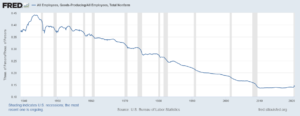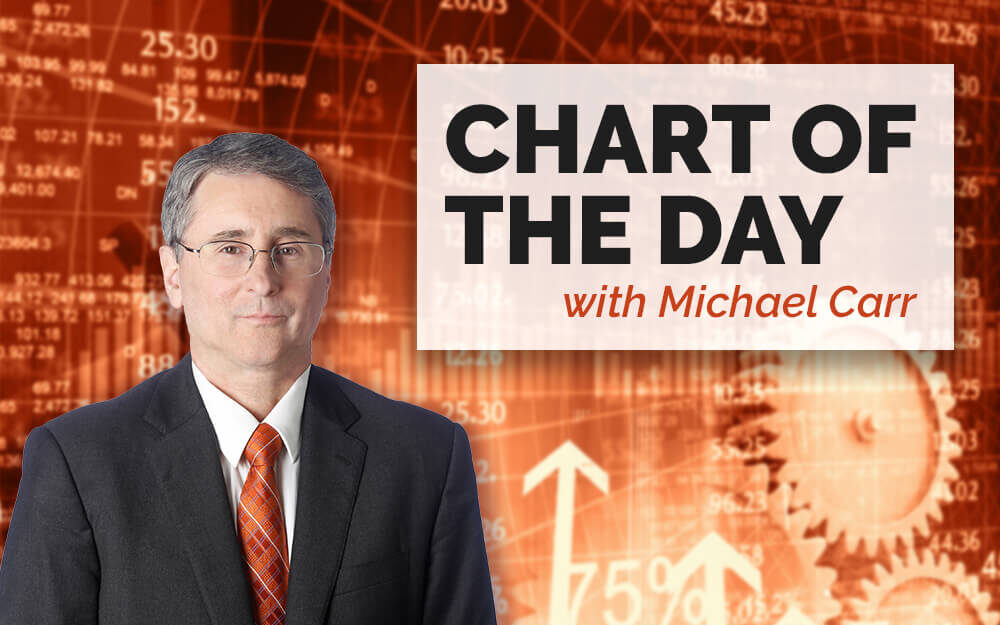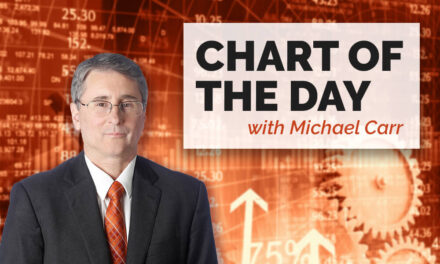Investors are optimistic. They hope an economic recovery is underway. Many look for fresh signs of recovery in every economic report.
That’s unnecessary.
The recovery, when it comes, will be driven by restaurants.
In broad terms, the economy consists of two parts:
- Those who produce goods.
- And those who consume them.
There are well-paid jobs in both groups.
But production jobs represent a small part of the economy. Federal Reserve data shows the number of production jobs have been falling since World War II when they represented almost 45% of all jobs.
Production Jobs Have Disappeared

Source: Federal Reserve
Manufacturing now accounts for just 14% of jobs. That share has been stable since the last recession ended in 2009.
Manufacturing jobs were almost all classified as essential businesses during the coronavirus lockdown.
With few layoffs in this sector, there is no hope that manufacturers can lead the economic rebound.
This chart also explains the nostalgia for the 1950s. Almost 40% of employees worked in manufacturing. These jobs were stable and offered benefits including health insurance and pensions.
By the 1990s, more than half of these jobs had disappeared.
They were replaced with jobs in the services sectors. Many of these jobs are less stable with schedules that vary from week to week and few, if any, benefits.
Watch Restaurants for the Economic Recovery
Many services sector employees suffered layoffs during the shutdown. The recovery now depends on these employees returning to work. But they’ll only return when customers return to stores and restaurants.
Manufacturing won’t drive the expansion given the 75-year downtrend in manufacturing jobs. So the recovery will take off only when restaurants and other services jobs are back to normal.
Investors watching for the recovery should look to their local restaurants. When these businesses are fully staffed, the economy will be back on track.
Confident consumers willing to sit in restaurants and linger in stores are the key to economic recovery. And we are far from that.
- Michael Carr is a Chartered Market Technician for Banyan Hill Publishing and the Editor of One Trade, Peak Velocity Trader and Precision Profits. He teaches technical analysis and quantitative technical analysis at New York Institute of Finance. Mr. Carr is also the former editor of the CMT Association newsletter, Technically Speaking.
- Follow him on Twitter @MichaelCarrGuru.




